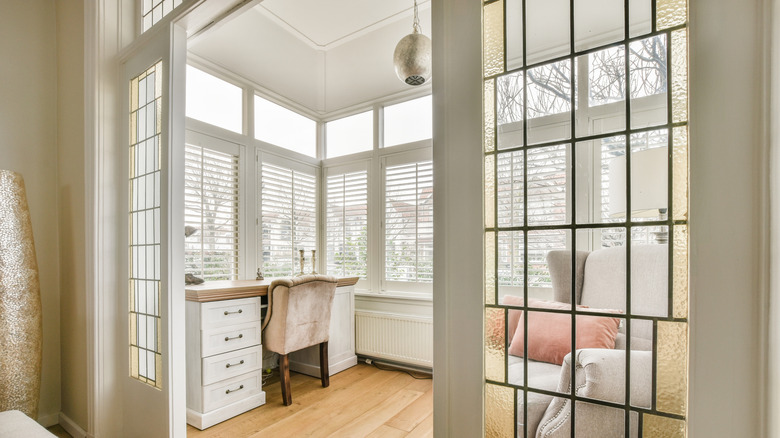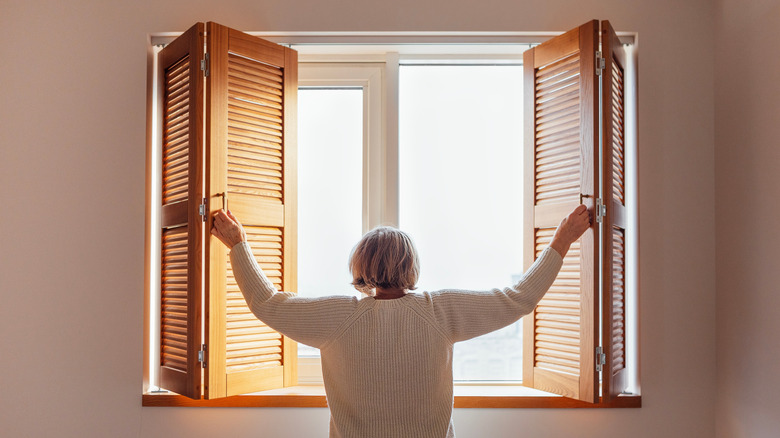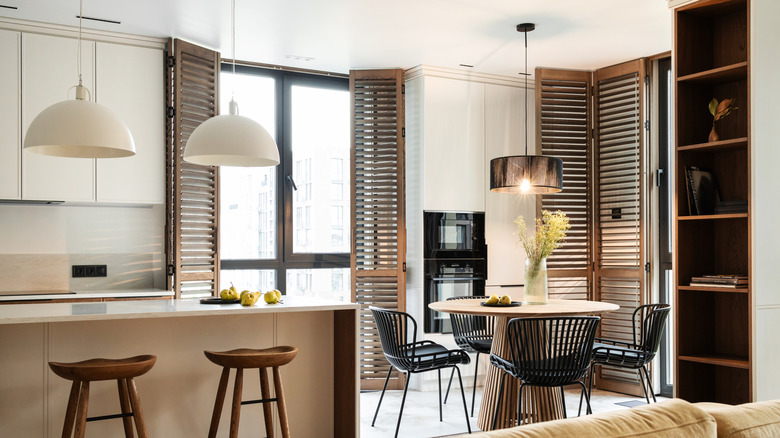Wooden Vs Faux Shutters: Which Suits Your Home Best In The Long Term?
If you're looking for wonderful window treatment ideas to brighten every room in your house, shutters could be the answer. Shutters might seem like a traditional option, but versatile designs allow shutters to work in updated, modern spaces as well. The style and color aren't the only decisions you'll make when you install shutters. Choosing between real and faux wood construction is another key factor in how your shutters look and how well they hold up. Real wood shutters can offer a beautiful wood grain and increase the versatility of finish options while faux wood excels at resisting warping and other damage in damp areas and is a low-maintenance option.
Whether they're made of real or faux wood, shutters offer a stylish way to control natural light and privacy. You can easily adjust the slats to let in just the right amount of light with simple, cord-free controls, making them safe for homes with kids. The window treatments offer insulation against heat and cold and help block UV rays, so they can improve the energy efficiency of your home. Plus, custom shutters make a good impression on potential buyers if you're considering selling in the near future, which adds value to your home.
Since both real and faux wood shutters offer these key benefits, it's helpful to look at the differences and how well they perform under different conditions. Your budget is a factor since wood shutters typically cost more than faux options. The installation location is also a key consideration since the materials hold up differently in moist conditions.
Wood shutters feature beautiful grain details and multiple finish options
Real wood shutters are available in a variety of wood types, which allows you to choose a wood grain and style that you like. Basswood is a popular option because it's highly durable but it's also lightweight, making it easier to hang and operate. Yellow poplar offers similar qualities, creating a durable, lightweight shutter that's ideal for painting. You can choose options made of hardwoods like oak, mahogany, and cherry, but you'll end up with a heavier shutter that's more difficult to install securely.
You will often find more finish options available with real wood shutters because materials like basswood accept wood stain well. That means you often have several options for stain finishes. Even though you'll pay more for real wood than faux wood, you also get the warmth and beauty of real wood. It's also easier to customize wood blinds to fit your windows precisely.
Wood is generally a strong, durable material option for shutters, which allows them to last. However, wood may not hold up as well in damp areas like kitchens and bathrooms because it absorbs moisture, especially when it's not well-protected. The moisture can cause warping and swelling that damages the shutters. That means you also need to be careful when cleaning plantation shutters made of wood to avoid water damage. You may need to paint or stain your wood shutters occasionally to protect them from damage, which makes them higher maintenance than faux materials.
Faux shutters offer low maintenance and moisture resistance
Faux shutters are often made with materials like polyvinyl, PVC, or composite wood materials to produce a less expensive option that replicates wood. Construction methods vary by brands with options including solid construction, hollow construction, or solid with a reinforced core made of aluminum. The durability and strength of faux shutters depend on the construction method and the quality of the materials.
Shutters made from faux wood typically hold up well against moisture, so they're a good curtain-free way to block light and add privacy to your kitchen, bathroom, or laundry room, which tend to be humid. Since the material doesn't absorb moisture, it doesn't swell or warp like wood can. The smooth, water-resistant surface makes faux shutters easy to clean with a damp cloth, and they don't require much maintenance.
There are limitations when it comes to the appearance of faux wood shutters. You don't get the depth and texture of authentic natural grain, so the shutters look smoother which could be a pro or con, depending on your preferences. Color options also tend to be limited with faux shutters — painted finishes are usually the only hue options, so they might not be the best choice if you want the warmth of natural wood tones. Painting many faux wood materials isn't an option, so you can't change the look of the shutters in the future. The durability of some faux materials decreases on larger shutters. You could notice sagging if you install larger faux shutters.


